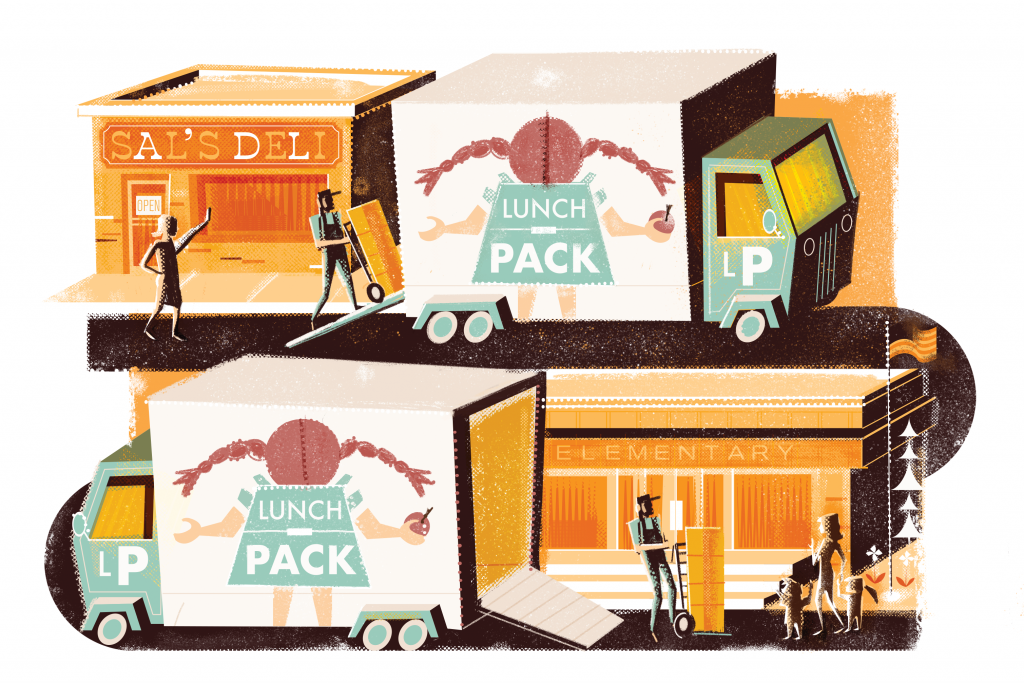For many of us, it’s hard to imagine not being able to open up the fridge and grab a snack or have the groceries needed to prepare a healthy and filling meal for our family.
But across the United States, food insecurity—or lacking enough food in a year to lead a healthy life—is rampant. According to Philabundance, 21% of Philadelphians are food insecure. In North Philadelphia, up to 30% of residents are hungry. Organizations like Philabundance, which acquires and distributes food, work to provide hunger relief to 90,000 people weekly in nine counties in Pa. and N.J.
There are other methods of distribution that could be more effective in addressing the ebb and flow of supply and demand that comes with inequity. In the mobile food pantry model, truckloads of food are provided to people in pre-packed boxes or through a farmers market-style distribution where people take what they need.
This approach could be an answer to achieving food security across the U.S.
“Ending hunger, improving nutrition and reducing food waste are important objectives for most countries, and they are also part of the United Nations 2030 Sustainable Development Goals,” says Subodha Kumar, Paul R. Anderson Distinguished Professor of Marketing and Supply Chain Management at the Fox School of Business. “Our research shows that mobile pantries are much more effective at achieving high-equity levels.”
The research of Kumar, Jon M. Stauffer from Texas A&M University and Manoj Vanajakumari from the University of North Carolina Wilmington focuses on how mobile pantry programs and additional storage capacity can be utilized to address this supply and demand uncertainty.
Based on data from a partner food bank, they found that mobile food pantries could triple the total distribution. Even small amounts of mobile pantry distribution in underserved areas allow for more flexibility and more equitable distribution across a city, town, neighborhood or rural area. This is especially true for food with different storage requirements and expiration dates because mobile pantry programs are the only option that can achieve high-equity levels (as opposed to increased storage).
Despite the fact that increased storage is potentially beneficial for shelf-stable items, the study finds that mobile pantry programs are a more cost-effective approach.
The research team studied Brazos Valley Food Bank to get a sense of best practices for mobile pantries, and areas for improvement.
“While this study was done in rural Texas, a lot of problems that we have in those areas are also common in Philadelphia,” says Kumar. “For example, we have a segment of people who are hard to reach and they have demands at different times. Often, food donations do not match demand—but with mobile pantries, it can be easier to reach the right place at the right time.”
Kumar posits that one way to ensure success in these programs is to create community. People managing soup kitchens and restaurants can partner with a larger food bank or pantry to increase distribution.
“For example, school backpack programs. If food distributors partner with local agencies, backpacks with pre-packaged meals can be created and donated to hundreds of students in a particular area,” Kumar says. “That’s just one way that people can get involved that will be very, very helpful in the whole distribution system.”
Getting involved with food pantries
While much of what would make mobile food pantries successful are local partnerships with food banks and local distribution centers, you can get involved beyond donating money or food items.
“One of the problems with food donation right now is that people give what they think will work, but they don’t know what is best for the distributors,” Kumar says. “What volunteers can do is tell donors exactly what they need, and when. People can, and should be, talking to donors. That part is missing.”
From Philadelphia Community Fridges, volunteering to package goods for Philabundance and donating to Temple’s Cherry Pantry, there are many ways to get involved in ending hunger in the Philadelphia community.
